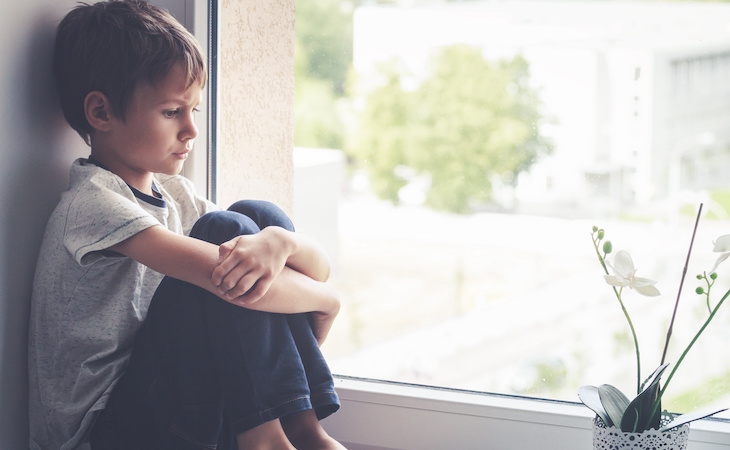Wiggly. Energetic. Feisty. These are just a few words to describe a new puppy or kitten. Whether you’ve welcomed a new best friend into your life during the holiday season or you’re planning on bringing home a pet in the near future, a sweet and rambunctious addition to your life is something sure to put a smile on your face.
That is until it’s time to go to bed. If you’ve set aside a crate or pet bed, those boisterous qualities may not be as cute when it’s the middle of the night and whimpering or meows prevent you from getting sleep.
The benefits of sleeping training new pets
This is where something called sleep training comes in.
“Having a new puppy or kitten is a little like having a newborn, especially in the first few weeks to months,” says Rebecca Greenstein, doctor of veterinary medicine and veterinary medical advisor for Rover. “As a new pet parent, creating structure and routine for your new fur baby is essential for you both.”
According to Greenstein, sleep training involves teaching your pet how to happily enjoy spending time in a crate or bed, which is “like any other trainable skill.” She adds, “While any pet can learn to sleep soundly through the night, it certainly takes patience, persistence, and effort.”
How to sleep train your dog
“Our first goal is to remember that we’re trying to make a bed or crate a positive, safe space for the puppy,” says Greenstein. This should be a calm, quiet environment away from high-traffic areas of the home, noises, and other distractions.
Also, take time to introduce your pup to his new sleeping quarters so he can start to develop a positive association with his “bedroom.” Allow him to explore his bed or crate slowly, using a reassuring tone of voice and offering treats as needed, as Greenstein outlines.
“Young animals are quick learners and need repetition to reinforce desirable behaviors, so if you want to train your pet to sleep in a particular crate in a particular place, start from day one if possible,” Greenstein says.
She details the steps so you can learn how to sleep train your dog.
Pick an appropriate sleeping area
Greenstein says a good sleeping spot for a puppy has close access to the outdoors, which can “make quick outdoor puppy bathroom breaks a breeze.”
As she mentioned, you should choose a place that’s fairly calm and quiet, and additionally, it should be free of temperature extremes and out of direct sunlight, ideally with blinds or curtains to be able to dim light if you’re trying to encourage rest. (Here’s a look at the most common dog sleep positions and what they mean.)
Set up a crate
“For puppies, in particular, a crate is a brilliant idea,” Greenstein says. “A blanket laid over the top and sometimes the sides can provide a feeling of coziness and safety.”
A crate also doubles as a familiar and comfortable confined area to keep young, small pets from wandering around the home—and potentially getting into dangerous shenanigans when you’re not there, adds Greenstein.
Play before bed
Greenstein notes that sleep training can be a lot more effective if you’re starting with a sleepy pet.
“If you want to get your dog to sleep by a particular bedtime, it always helps to tire them out a little first,” she says. “Ensuring your pup or kitten gets enough exercise and play will help to dissipate all that bouncy energy and get them ready for dreamland.”
Be realistic about potty-training expectations
“Young puppies and kittens have immature organs and tiny bladders, so they literally can’t go overnight without having an accident,” Greenstein emphasizes.
“It’s essential that owners recognize this so they can be proactive about taking the little guys out before accidents happen and reward them for positive behavior rather than constantly dealing with undesired pee and poop accidents that can be upsetting to owners and young animals as well.”
How to train a kitten to sleep at night
If you’re wondering how to train a kitten to sleep at night, you’ll essentially follow the same steps for puppies as outlined above. There are a couple of distinct differences to note between these two pets, though.
Potty breaks aren’t as key
Greenstein says since the majority of puppies are accompanied on supervised bathroom breaks outdoors by their owners, there’s inherently a little more structure built into puppy training compared to kittens, who are a bit more independent from the get-go. Your kitten should already have the instinct to use her litter box, which shouldn’t disrupt your sleep.
Cozy up their sleeping space
“While preference for a particular kind of bed may depend on the individual pet,” Greenstein says, “studies have shown that cats often enjoy a cozier refuge since having a hiding spot—as basic as even a simple box—is linked with lower stress levels.” (Here’s what the most common cat sleeping positions can tell you about your kitty.)
Helpful resources for new pet owners
Whether you’re sleep training a puppy or a kitten, there are some resources you can turn to with any additional questions.
“Your family veterinarian is an invaluable resource when it comes to puppy or kitten care 101,” Greenstein says. “Most pet parents don’t realize that instead of Googling, your vet is a fantastic go-to for practical strategies on behavioral training.”
If you’re struggling to sleep or crate train your new pet, there are certified trainers and virtual tutorials that may also be useful, adds Greenstein.
A better night’s sleep, for you and your pet
Greenstein stresses the importance of structure and routine, something that can help you both sleep better.
“Creating happy rituals around bedtime or quiet time will ensure your growing pet gets the vital rest he or she needs while teaching them that independent time can be cozy and not scary, all while protecting them in a safe and comforting environment,” she says.
To read more about pets and sleep, check out these articles:
- How Much Do Dogs Really Need to Sleep? Here’s What’s Normal
- Why Does My Cat Sleep So Much?
- 5 Ways to Keep Pets From Ruining Your Sleep









